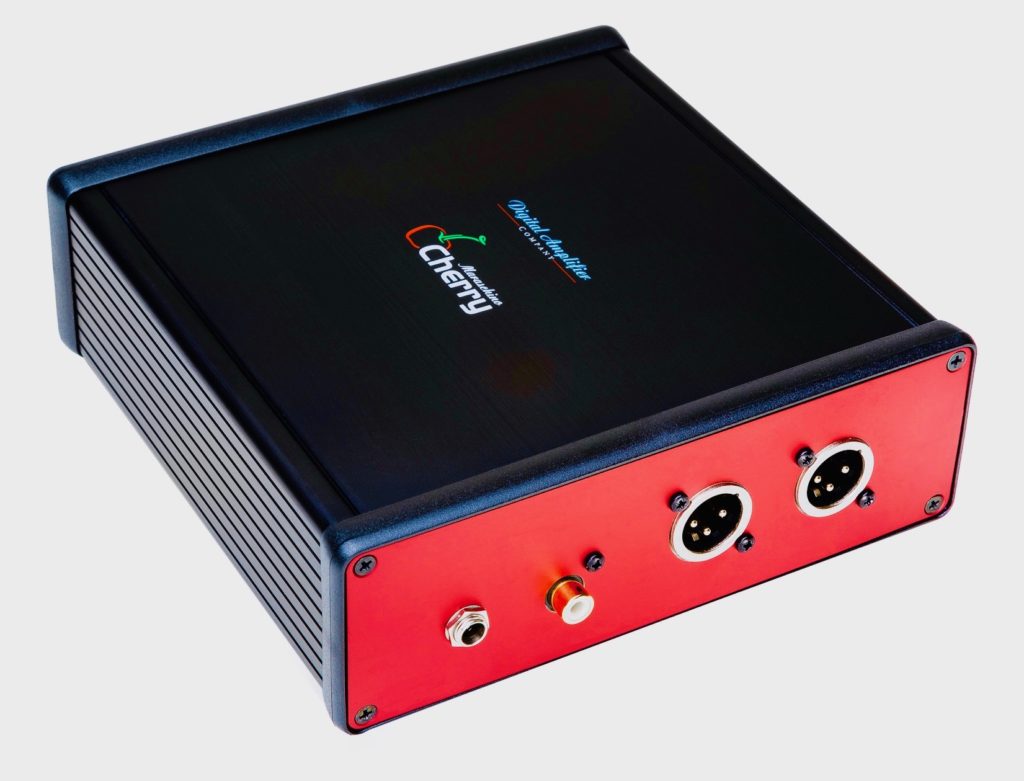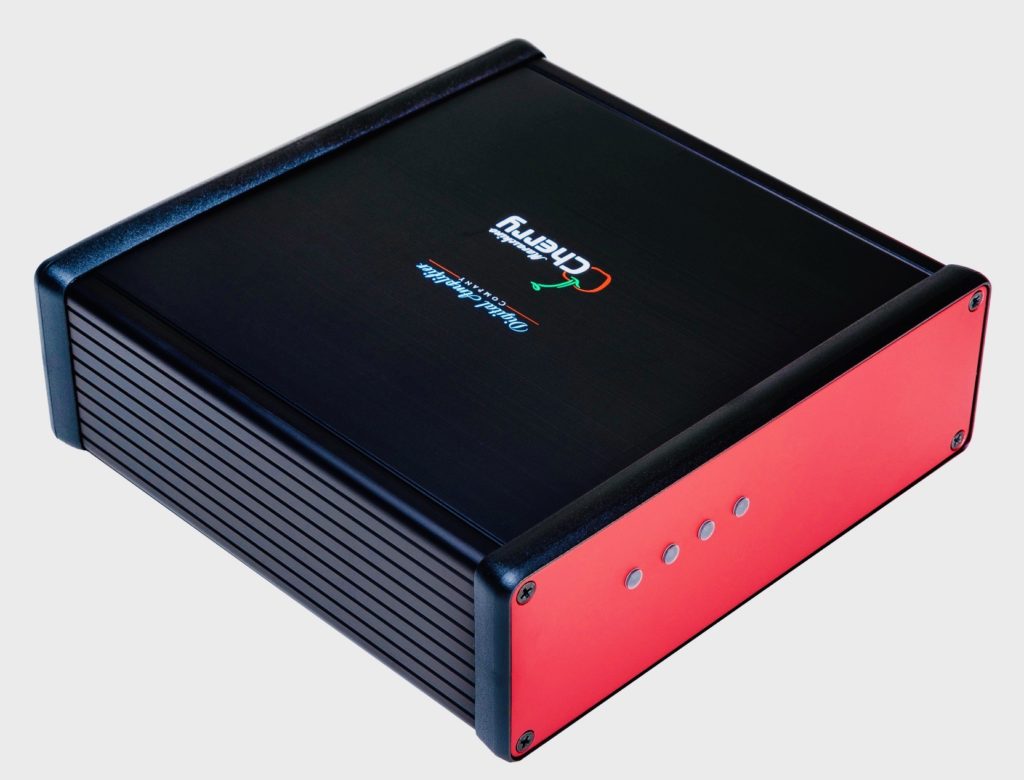
A little over a year ago I reviewed and compared the Digital Amplifier Company’s DAC DAC 1 High-Spec Version to their tube-like version. I liked both, but I found the high-spec version to be so superb sonically that I preferred it. In fact, I liked it so much that I gave it an award as the Best Digital Device in 2017. Now, there’s a new DAC DAC 2 HS.
Backing up just a bit, I’ll confess that I first became aware of this company and their cherry-red boxes about the time that we launched The Audio Beatnik, so that’s less than 2 years ago. Last year, I had the opportunity to visit with Tommy O’Brien, the founder and owner, at AXPONA. Tommy started the company in 1996 after several years of developing switching amplifiers for audio.
You can read more about their journey on the website, but after much research, they eventually decided to manufacture their own finished products. Tommy says, “We designed our amps for high performance on the bench, but more importantly, ultimate sonic satisfaction!” A big part of Tommy’s approach to electronic design is to use the shortest possible signal path for each product.
And, before we go much further in this review, I should tell you that the DAC DAC is a D/A converter for ultra-high-performance 2-channel audio systems. They come in 4 versions : TL (Tube-Like) 1, HS (High-Spec) 1 and 2, and a HS (High-Spec) 2 with a volume control.
About the DAC DAC 2 HS
The new DAC DAC 2 HS looks just about the same as the DAC DAC 1 HS in the pictures. However, they have changed some of the circuitry in the clocking and power supply sections. The PCB layout has also been optimized. These changes result in 4dB higher SNR/DNR. The back panel has two balanced outputs, a coax SPDIF input, and a power input.

Here are the basics from the website:
- 2 versions – with or without volume control knob
- Coax SPDIF input, PCM up to 192kHz sample rate, 24-bit resolution
- Balanced outputs (XLR), and custom adapters (XLR-to-RCA) are available for single-ended use
- External 12VDC power supply
- Indicators for Power, Valid Signal, >50kHz Fs, >100kHz Fs
- 6.5″ x 6.3″ x 2.5″ aluminum enclosure with vibration absorbing Sorbothane feet
My Review System
I used a 47 Labs 4735 Midnight Blue CD Player as a transport for the review. The amplifier was the Linear Tube Audio MZ2-S integrated amp with a pair of Teresonic Ingenium speakers. I also still had the DAC DAC 1 HS on hand for comparison.
Listening
In my first review of the DAC DAC 1 HS; I asked, “So, how does Tommy’s unique approach to electronic design using the shortest signal path for better sound work out in real life? Well, both of the DAC DACs are very listenable. I’m not going to waste your time, I’ll tell you right off the bat that they are as listenable as any digital source I have had in my system.”
Well the DAC DAC 2 HS is very listenable as well. Like the DAC DAC 1 HS, voices, strings and horns all sounded very clear. In fact, I could hear air and nuances around voices and instruments in a way that made them sound nearly real. Regardless of the model, the DAC DAC has a very special way of enabling you to hear the body and the soul of the music.
Overall with any of the DAC DACs, voices, strings and horns all sound very natural and have the air and nuances that allow music to sound so real. I highly value the ability of equipment to let me hear the air and nuances of music; it helps a system to sound more alive. I have to say that this is where I found the 2 HS to be slightly better than the 1 HS version in my earlier review.
So, this leads to the question of how have the technical changes in the DAC DAC 2 HS affected the sound. The DAC DAC 2 HS with its 130 dB signal to noise ratio and improvements technically with the ultra-short analog signal path is still a very natural sounding DAC. The DAC DAC 2 HSV uses lossless digital attenuation controlled by a “natural feeling” analog pot. This preserves the short signal path of the output circuitry since the analog signal doesn’t go through any additional circuits in the analog domain.
The DAC DAC 2 HS is also both smoother and more detailed at the same time than the previous version. Being quieter, I was able to hear more spatial cues, which resulted in a very impressive soundstage.
The bass was tight, deep and full with more air and decay than its predecessor. The leading edge of bass instruments was a little quicker than what I heard with the 1HS; and with much more natural air and decay. The dynamics and scale were stunningly better than the 1 HS. This was stunning since in my earlier review I commented that the 1 HS was better in these areas than any digital source that I could remember hearing in my system.
Both the 1 HS and 2 HS also passed my treble test. That is, I never asked where is the top end or why is the top-end so etched? The 2 HS does have just a touch more sparkle and a little more silky playing strings. The warmth and individual qualities of violins were also more beautiful on the 2 HS.
Conclusion
By now it should be obvious that I think the 2 HS DAC DAC is a significant step up from the previous model, and I recommend it Very Highly. I hope to be able to listen to it soon with the USB converter and my Innous Music Server. Chances are good that this will not be my last review on this sweet little box!
Pricing:
DAC DAC 1 HS or TL – $990 (were $1,290)
DAC DAC 2 HS – $1,290DAC
DAC 2 HSV – $1,490 (with volume control)

Any other DAC you’d suggest under the $1500 price than the DAC DAC HS2?
I’d suggest you look at BorderPatrol if you don’t have to have hi-rez.